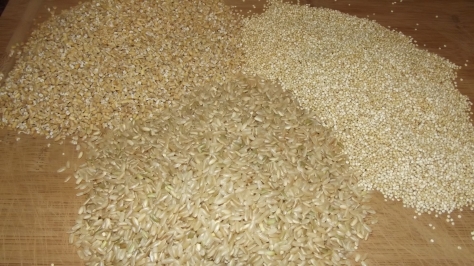By Melanie Albert, Nutrition & Wellness Expert, Author & Speaker, Founder & CEO Experience Nutrition
Excerpt from book: “Enjoy Food & Life. 9 Ways 90 Days Step-by-step action plan for healthy eating & living.”

Why We Need Carbs
People are confused about carbs and about whole grains. Many diets are no carb or low carb, but in reality our bodies need about 40-50% carbs every day at every meal. The problem is that people eat low quality carbs, like cookies, cakes, crackers and bread. Other carbohydrate-rich foods, such as whole grains, beans, vegetables are good for us.
Carbs are:
- The body’s main source of fuel
- Easily used by the body for energy
- Needed for the central nervous system, kidneys, brain and muscles (including the heart) to function properly
- Stored in the muscles and liver and later used for energy
- Vital to intestinal health and waste elimination
Anatomy of a Grain
Bran: The outer shell of grain which protects the seed. Contains fiber, B vitamins and minerals.
Germ: Nourishment for the seed. Contains B vitamins, minerals, vitamin E, and phytonutrients.
Endosperm: Energy for the seed. Contains carbohydrates, some protein and B vitamins.
What Makes a Grain a Whole Grain?
- It has not been processed (made into other food products like flour, cookies, bread or crackers)
- It is a whole food and includes the germ and bran
- It is considered a “good carb”
Refined grains: Grains or grain flours that have been significantly modified from their natural composition. Generally involves mechanical removal of bran and germ. Further refining includes mixing, and bleaching.
Enriched grains: Thiamin, riboflavin, niacin and iron are often added back to nutritionally enrich the product. Because the added nutrients represent a fraction of the nutrients removed, refined grains are considered nutritionally inferior to whole grains.
ACTION
Go to our Facebook page and share what grains you currently eat and which you will enjoy in the future.
Leave a Reply